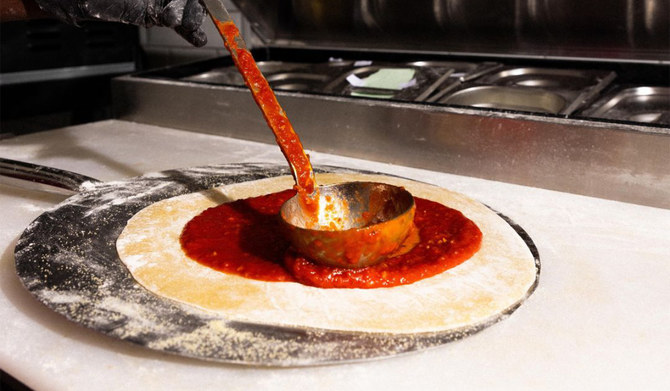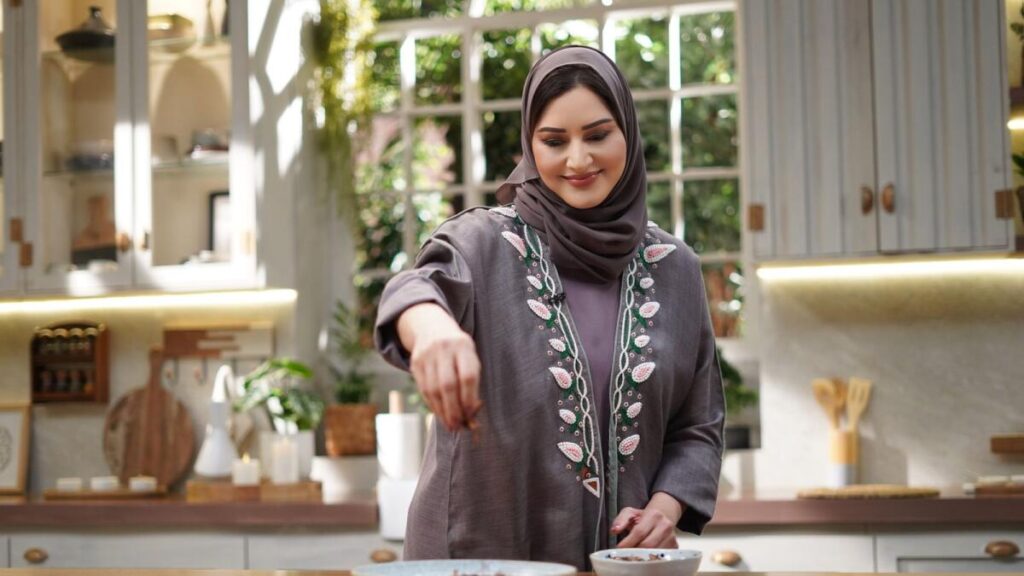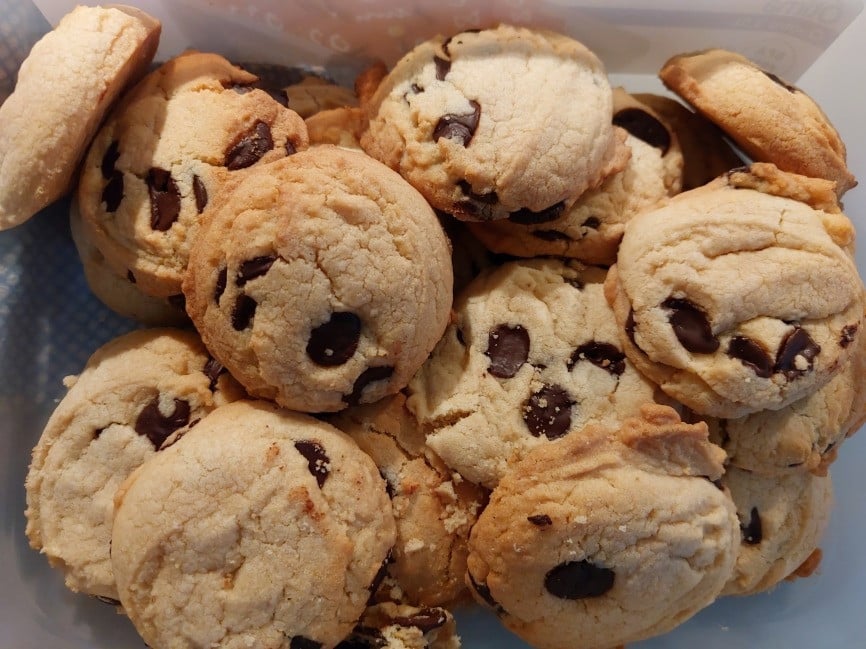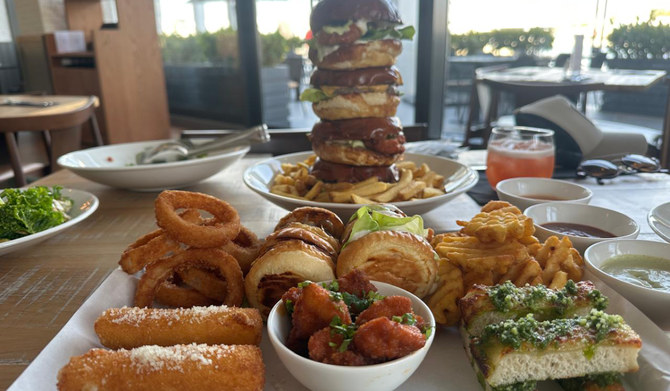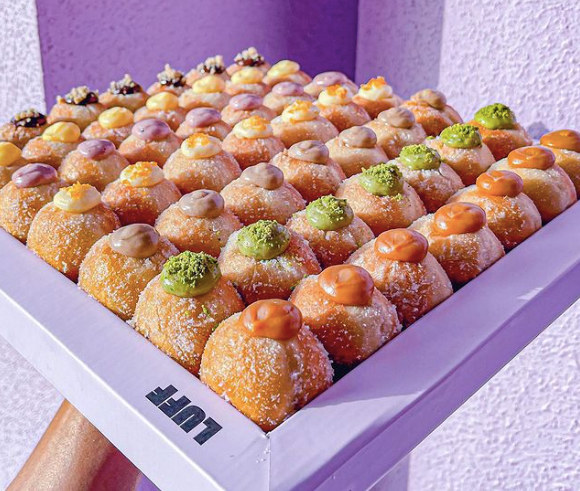Monitoring Desk
The pristine stretch of sand on Ponta da Maresia beach is a gathering point in the Brazilian town of Maués. Early risers head down to swim in warm waters that have neither waves nor salt, for the beach is on the banks of the Maués-Acú River in the heart of the Amazon rainforest, some 1,000km from the ocean.
For us, it’s a mystical plant. It’s the origin of our people
The beach only emerges for a few months of the year, from August onwards, at the start of the dry season when the river levels drop. This time of year also marks the start of the guaraná season, when the fruit native to the Maués region begins to ripen, its red skins bursting open to reveal white flesh and a black seed that bears a disconcerting resemblance to an eyeball.
Maués is one of the top guaraná-producing regions in Brazil. Both its economy and its culture revolve around the fruit, whose seeds are highly prized for their stimulant and medicinal properties and find their way around the world into everything from fizzy drinks to energy drinks such as Monster and Rockstar, as well as medicines and cosmetics. It’s an industry worth millions of dollars to the Brazilian economy each year.

Guaraná contains high levels of caffeine – as much as four times that of coffee beans, as well as other psychoactive stimulants (including saponins and tannins) associated with improved cognitive performance. And numerous research papers explore its potential in the prevention of cardiovascular disease, as an anti-inflammatory, antioxidant, antidepressant, intestinal regulator and even an aphrodisiac.
Maués might be dubbed the “land of guaraná” but the fruit’s history long predates the town. The Sateré-Mawé indigenous people have been cultivating guaraná in their ancestral forests nearby for millennia. It was their ancestors who domesticated the species, learned of its properties and devised the best cultivation and processing techniques.
It was only 352 years ago, however, that the earliest written record of guaraná appeared, when the Sateré-Mawé first came into contact with Europeans. The year was 1669, and a Jesuit priest, João Felipe Betendorf, on one of the many missions sent by the Portuguese crown to open up the Amazon and extract its riches, wrote of a “little fruit, which [the Sateré-Mawé] dry and crush, forming balls which they value as the whites value gold”. Portuguese colonisers in the 18th Century also described guaraná as the Sateré-Mawé’s “most precious asset” and of its use “as currency for payments”. By the early 19th Century, records describe an intense commerce of the Amazonian fruit as far and wide as Bolivia, Argentina and even Europe, where it was “greatly appreciated” by the men of science at the International Exhibition in London in 1862.
The Sateré-Mawé had a monopoly on the production of guaraná (or waraná, in their language) up until the late 19th Century, but to talk of their connection to it in purely commercial terms is to entirely miss the political, moral, cultural and spiritual significance it has.

“For us, it’s a mystical plant. It’s the origin of our people” explained Obadias Batista Garcia, president of the General Council of the Sateré-Mawé Tribe (CGSTM).
Their oral legends describe how they descended from a murdered child, whose eye was buried and grew into the first waraná plant, from which the first Sateré-Mawé person emerged. Garcia tells me their origin story in as concise a way as he can, but it’s a bit like explaining the Bible or the Quran in 10 minutes. “It’s a long story,” he said afterwards. “It’s something that parents tell their children every night, so we can learn to live, to be leaders, to be good parents and good children.”
Just 75km upriver from Maués, the Sateré-Mawé still cultivate guaraná in their traditional way, on 8,000sq km of protected indigenous territory. They gather seedlings from underneath wild guaraná vines (Latin name Paullinia Cupana), which are then transplanted to clearings where they grow into fruit-bearing bushes.
During the harvest season from November through to March, the seeds are washed, roasted, peeled, ground and then mixed with water to be shaped into batons that are left to dry in a smokehouse and can be kept for years. These batons are then grated on a stone and steeped in water to make an earthy-tasting drink called çapó. It’s both a daily beverage and the accompaniment to rituals and rites of passage, such as the Festa da Tocandeira, a coming-of-age ceremony for young men. Preparing and drinking çapó has its own set of rules that are observed, such who should serve the drink to guests, the order in which it must passed around, and that the bowl should never be handed back empty to the host.
Tourists are welcome to visit and learn about the Sateré-Mawé’s waraná-making traditions; the community opened up a pousada (guest house) nearly 30 years ago, taking visitors on hikes through their forest and to see handicrafts being made.

Over the centuries, people across the region have learnt the Sateré-Mawé methods for cultivating and processing guaraná, and nowadays some 2,400 families around Maués grow and sell upwards of 500 tonnes of processed seeds in a good year. “The ribeirinhos [traditional riverside communities] in Maués learnt from the Sateré-Mawé,” said Ramom Morato, coordinator of the Guaraná Alliance of Maués (AGM), a network set up in 2017 to improve the quality of life for the people of Maués. “They’re all family farmers and a lot of them are descendants of indigenous people or identify as indigenous. The process is artisanal and guarantees a high-quality product. The fruit is selectively harvested by hand and the seeds spend hours and hours in clay pans to reach the perfect humidity. It’s different to other regions where the process is industrial.”
The AGM was instrumental in securing a geographical indication status for guaraná from Maués in 2018, a guarantee of sorts to buyers of a superior quality product. Another focus of the alliance is to develop community tourism initiatives, through local guides such as Ítalo Michiles, who set up Experiência Mawé in 2019. Almost any excursion with Michiles starts and ends on a small motorboat, navigating the vast web of rivers that wiggle and wind through the forest, connecting rural farms and communities. He takes visitors to have a fish lunch with ribeirinhos and see how they cultivate and process guaraná.
Like the Sateré-Mawé, drinking guaraná is part of their daily routine and part of the experience for visitors, too. The ribeirinhos grate the brown guaraná baton using the coarse dried tongue of a pirarucu, one of the world’s largest freshwater fish, which can weigh up to 200kg and has – unsurprisingly – a pretty big tongue, about 10cm long.

Visitors can also take in the modern side of guaraná production in Maués, touring plantations belonging to the state-owned agricultural research agency Embrapa, which is developing more productive cloned varieties of guarana; or the 1,000-hectare Santa Helena Farm, which is owned by global drinks giant Ambev. Most of the farm is protected forest but Ambev grows a small amount of guaraná here, sourcing 90% of their guaraná supply from around 2,000 local farmers. The seeds are sent to Manaus where they become the magic ingredient in the fizzy drink Guaraná Antártica, Brazil’s answer to Coca-Cola. While many Brazilians have never heard of the Sateré-Mawé, Guaraná Antártica is a household name; they drink nearly 400 million litres of it each year.
The percentage of elderly people in Maués is double Brazil’s national average
There’s also the Festa de Guaraná (The Guaraná Festival), set up in 1979 by an enterprising mayor to celebrate the fruit’s harvest. The festival is held in late November or early December and it’s the highlight of Maués’ social and business calendar, drawing tens of thousands of revellers to a three-day celebration on Ponta de Maresias beach.
An all-encompassing line-up of activities generally includes a trade fair, sporting competitions, concerts and even a Guaraná Queen beauty pageant. The Sateré-Mawé waraná legends are liberally reinterpreted on stage as flamboyant musicals, though the indigenous people are notably excluded from the festivities.
“The music starts up at 19:00,” Michiles explained. “All along the beach, stalls sell food and drink, and guaraná of course. People drink turbinado [“turbocharged”] – a non-alcoholic shake with guaraná, avocado, peanuts, and dance till 3, 4 or 5 in the morning. Guaraná gives you so much energy.”
Chances are, a fair few pensioners are among the crowds that dance till dawn at the festival. The percentage of elderly people in Maués is double Brazil’s national average. This curious phenomenon sparked interest in the Brazilian press when it came to light 10 years ago, with TV crews interviewing razor-sharp 90-year-olds who still do a hard day’s work outdoors. It could be down to active lifestyles or the lean Amazonian diet, but their regular guaraná habit seems a likely factor, too.

Scientists from three public universities (Brazil’s Universidade do Estado do Amazonas and Universidade Federal de Santa Maria, and the University of León in Spain) began a research project in Maués in 2009 to study the impact of guaraná on the local elderly population. Their findings have been published in a handful of scientific papers published in international journals, including a 2011 paper in the monthly journal Phytotherapy Research, which showed that the elderly in Maués who consume guaraná have more protection against metabolic disorders than those who don’t.
Of course, the Sateré-Mawé knew of its health- and energy-boosting properties long before it became a global commodity. Guaraná is their gift to the world and they’re finally getting recognition for it. In late 2020, the Sateré-Mawé’s waraná was awarded a Brazilian Appellation of Origin status – an official recognition of the exclusive link between the product and its place of origin. It’s the first time this certification has been granted to an indigenous people in Brazil and will open the door to a similar status (Protected Designation of Origin) granted by the European Union.
“The Appellation of Origin is the recognition of a decades-long fight to defend a product that should not be reduced to a commodity,” said Maurizio Fraboni, an Italian development socioeconomist who has been working with the Sateré-Mawé to protect their culture for years, alongside organisations such as Slow Food.
Their annual production of waraná is tiny compared to that of the wider Maués region, but it’s sold in 22 countries around the world, to authorised partners who value its quality and its origin. “Commercialising it has given us financial and political autonomy so that we can create our own policies to manage our land,” said Garcia. After all, as he put it: “there would be no Sateré-Mawé without waraná and no waraná without the Sateré-Mawé.
Courtesy: BBC



